

Making a difference for nature
Surrey Wildlife Trust has a county-wide mission to protect and connect wildlife and wild places across Surrey – and this critical work depends on people like you.
In this report we showcase some of the impacts that support from members, donors, legators and businesses helped us achieve in 2024/25.

“Surrey Wildlife Trust’s work is a real beacon of hope.”
Emily, Trust Member
“Surrey Wildlife Trust has reconnected me with nature right on my doorstep. It’s a movement I’m proud to be a part of.”
Peter, Trust Member
Welcome and thank you from our Chief Executive
The years ahead will be ones of unprecedented challenge for the conservation movement in the UK and around the world. Even as the effects of the climate and nature emergency bite deeper, the parallel drive for economic growth and improvements in infrastructure mean that we will have to get even better at defending wildlife and wild places, and also better at persuading people that protecting the natural world is not an impediment to progress, but a condition of it.
In short, we must continuously demonstrate that supporting Surrey Wildlife Trust is an investment that pays.
Reviewing this report gives me confidence that we are equal to that challenge. Evidence of our reach and impact goes far beyond the statistics and case studies set out here, but they make impressive reading; 27,000 volunteer hours and over 1,500 individual donations to our fundraising campaigns speak volumes about the strength of support we enjoy. I hope this document reassures you that your generosity translates directly into results on the ground.
On behalf of the entire SWT team, I want to thank everyone who has helped make our work possible.
Our impact is not measured simply in actions taken for nature through our own projects and on our own reserves - essential though this work is. It is also felt through the services we provide to private individuals, businesses and public bodies through our Nature-based Solutions team, Ecology Services division, Ecological Planning Advice Service, and Corporate Partnerships team. Conservation must quickly move from the fringes to the mainstream of day-to-day decision making, and these operations will become increasingly important as growing components of Surrey’s wider economic ecosystem.
As we work with increasing urgency towards the national goal of protecting 30 per cent of land and sea for nature by 2030, your continued support will be crucial. I very much hope that you will be with us on that journey.
With warmest wishes,
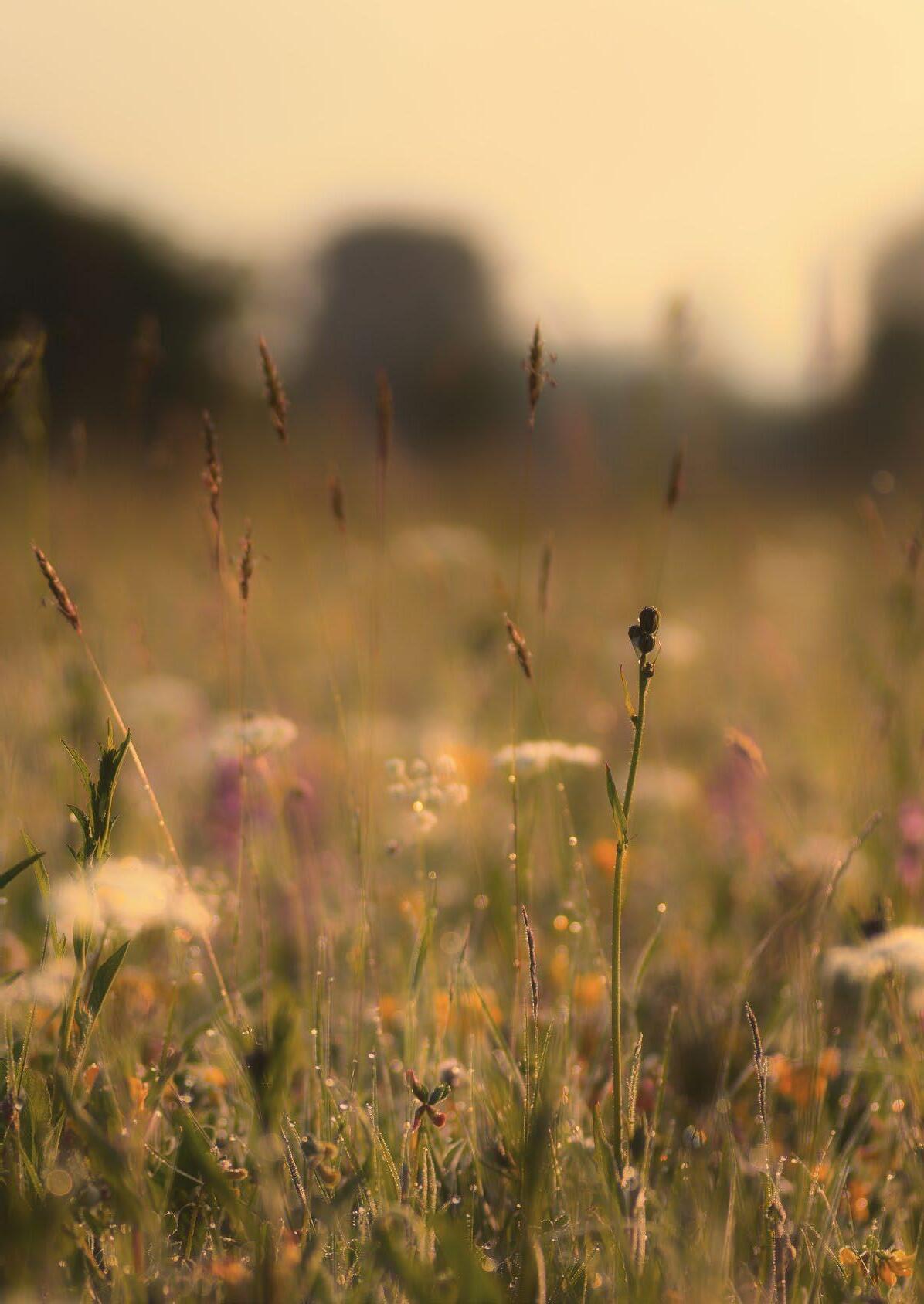
Sarah Jane Chimbwandira Chief Executive Officer
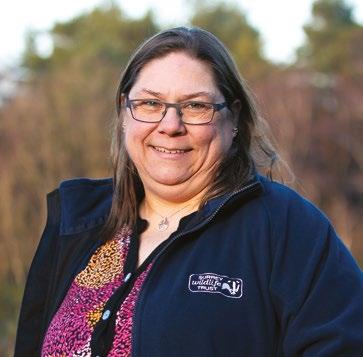
Meadow: Andy Bartlett
Where your support goes
For every spent, 86p is spent on protecting nature and 14p is used to raise the next £1.
Your impact in action – a transparent view of our finances.
We are committed to using every pound wisely to protect and restore nature across Surrey. In 2024/25, we made a conscious choice to invest ahead of income.
Why? Because only immediate action can match the scale of the nature crisis and grasp crucial opportunities to restore nature.
Income
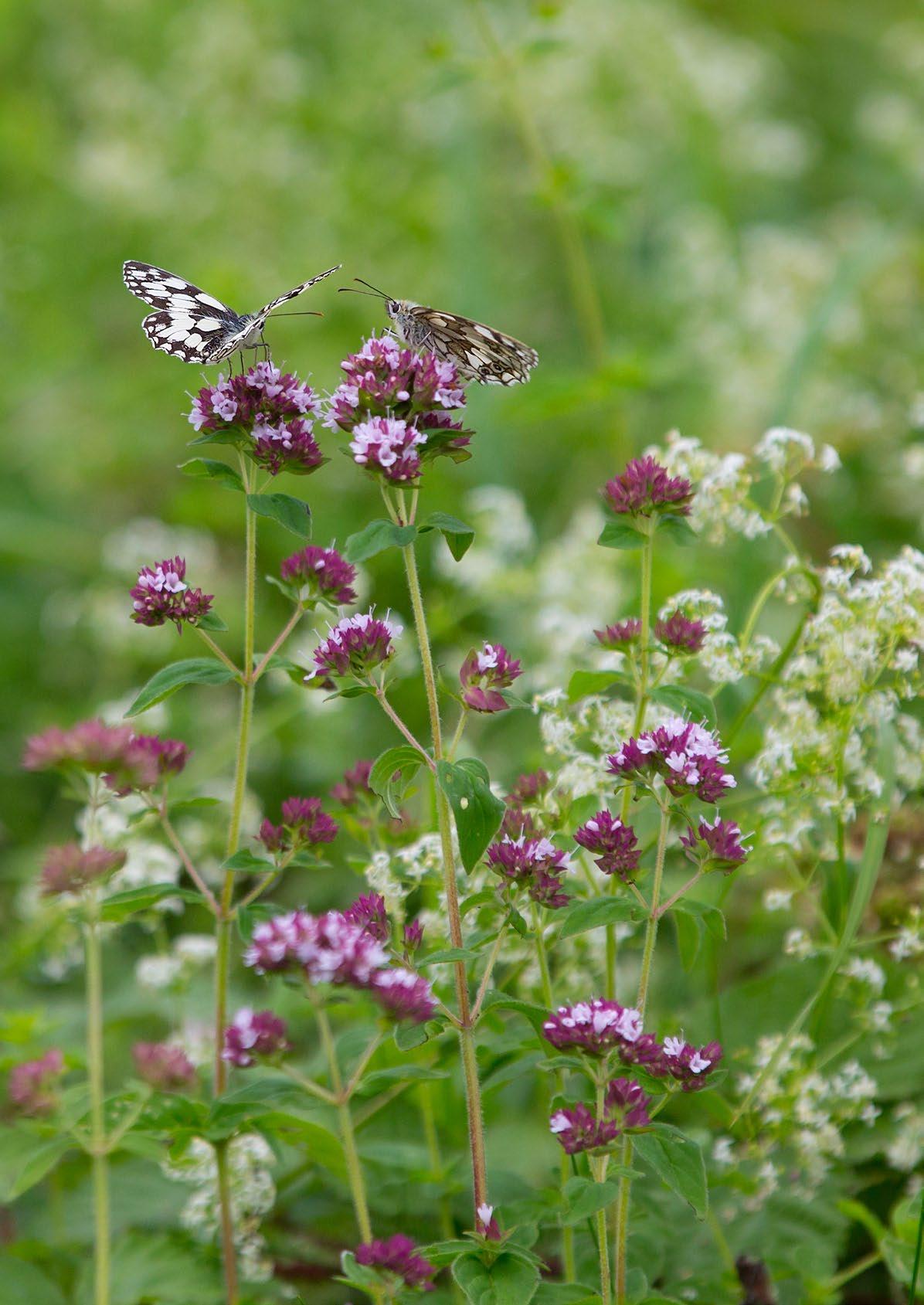
£2.5m
£1.2m
Expenditure
£2.4m
£1.7m
£1.2m
£7.1m

Our priorities for the future
The next five years are crucial. With your support, we will...
Join up Surrey’s wild spaces
We’re linking woodlands, wetlands and grasslands so wildlife can move freely, find food and thrive across the county.
Revive Surrey’s rarest species
From Hazel Dormice to Heath Tiger Beetles, we’re helping endangered animals and insects recover and thrive in healthy numbers.
Harness nature to build climate resilience
By re-wetting wetlands, grazing with livestock, creating natural firebreaks and exploring Beaver reintroduction, we’re making our landscapes stronger and richer in wildlife.
These are bold, strategic goals. But with the right funding, they are entirely achievable.
Surrey’s landscapes are not just rich in wildlife - they are deeply tied to local identity, history and wellbeing. Our work helps keep those connections alive for generations to come.
Our ambitions: what needs funding
Your legacy for nature could start right here.
This is a critical moment. Despite economic uncertainty, we have chosen to act decisively for nature. With your help, we can close the gap and drive even greater impact.
Key projects
We are seeking partners to help us unlock the next stage of impact. Here are just some of the projects that need support:

Recovering key species in Surrey
Funding needed: £115,000
Impact: Reintroduce breeding populations and reconnect critical habitats.
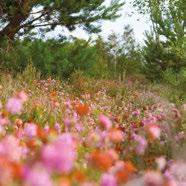
Climate change: wildfire resilience
Funding needed: £75,000
Impact: Use expert land management and technology to prevent fires and protect vulnerable wildlife.
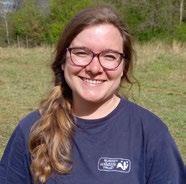
Nature Restoration Trainees
Funding needed: £130,000
Impact: Train 10 young people for long-term careers in conservation.
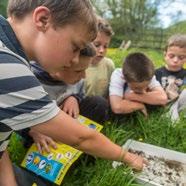
Wilder Schools & Outdoor Learning
Funding needed: £60,000

Impact: Inspire 10,000+ children and families through hands-on conservation.
Beaver: Nick Upton
Ross Hoddinott/2020VISION
Harvest Mouse: Vaughn Matthews

Ways to support our mission
Together, we can deliver long-term solutions to the nature and climate crises. Here’s how you can help:
Invest in local nature
Make a significant contribution that directly enables bold and urgent conservation work.
Sponsor a project
Fund a specific conservation priority aligned with your values or mission.
Partner with us
Join our network of purpose-led businesses supporting Surrey’s future.
Leave a gift in your Will
Create a legacy that protects Surrey’s wildlife for generations to come.
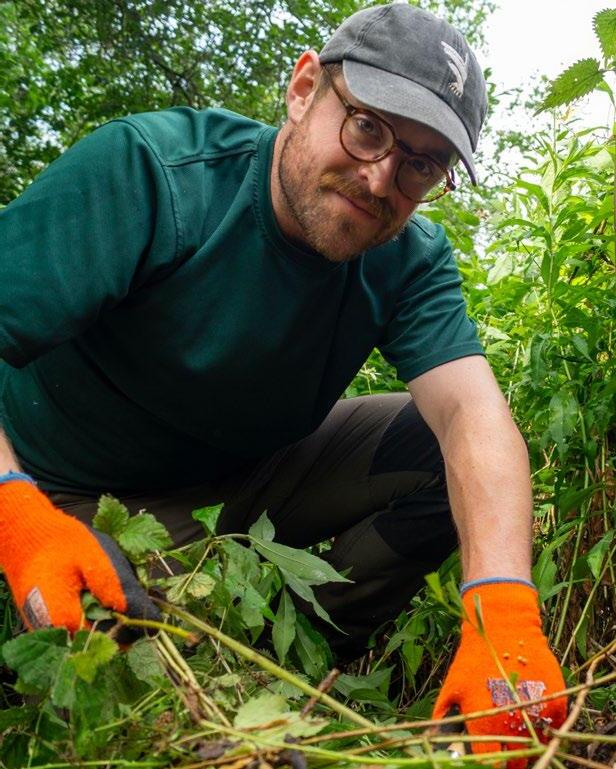
“Supporting Surrey Wildlife Trust gives our company a meaningful way to give back to the community - and the planet.”
CEO, Kia UK (Corporate Partner)
Let’s talk

Woodland 1
Surrey is England’s most-wooded county, with well over one-fifth of its land area covered by trees. But this fact conceals a more sobering one – many of
these woodlands are not well-managed for nature.
To really thrive as hubs of biodiversity, woodlands must exhibit a mix of mature and younger deciduous trees, scrub, wildflowers and other foliage, dead trees, glades, water sources and coppiced areas. When these conditions are present, they are nature-rich and magical places, brimming with life and providing huge restorative power for people at all times of the year.
On the woodland sites that it owns or manages, of which over 1,300ha is ancient woodland, Surrey Wildlife Trust invests considerable time and labour to deliver the optimal environment for wildlife.
In 2024/25, projects undertaken include rotational coppicing, deadhedging, the clearance
of ponds which have become overgrown or shaded, and the design of coupes to reduce the impacts of deer browsing.
Species benefiting from this work include the Sparrowhawk, Goshawk, Tawny Owl, Spotted Flycatcher, Treecreeper, Greater Spotted Woodpecker, Hazel Dormouse, Badger, Stag Beetle, Purple Emperor butterfly, Great Crested Newt, Grass Snake, Common Toad, Bluebell and Wood Anemone.



Treecreeper: Jon Hawkins

of ancient woodland is managed by Surrey Wildlife Trust

Roe Deer:
Jon HawkinsSurrey Hills Photography
Woodland
Infrastructure enabling access to nature
Safe and unintrusive access to nature reserves is vital for members of the Reserve Management teams, volunteers and in many cases the public. Work to restore damaged infrastructure included new sections of path at Cucknell’s Wood; one new bridge and two repairs/ handrail installations at Fir Tree Copse; gate and fence repairs at The Forest; fence removal at Farncombe Wood; and multiple fence repairs across Papercourt Meadows and Marshes. Where possible, timber materials have been used from the site itself to reduce reliance on imported, expensive timber.
Together Our Actions Deliver (TOAD)
Armed with buckets and torches, in spring 2025 volunteers and staff saved over 1,300 toads from being run over by traffic as they travelled between The Drift Golf Club’s breeding ponds to their home in The Forest reserve. To help far more amphibians, the creation of more than 60 metres of additional fencing will now guide toads to a purpose-built under-road tunnel.


Common Toads


Ecology Services: delivering conservation through consultancy
Scale and connectivity are the keys to successful conservation, and SWT’s range of operations is growing accordingly.
Our Ecology Services team provides advice across the county and beyond to ensure that land is managed well for nature, delivering resilient, species-rich landscapes. Just across the border in Sussex, the team is advising a major landowner who is working with a group of like-minded land managers including the wellknown Knepp Estate as part of the Weald to Waves project, which aims to deliver a 20,000ha, 100-mile contiguous corridor for wildlife which will stretch from the Ashdown Forest to the kelp beds of the coast.
Delivered through a 30-year plan, our expertise will help ensure the effective stewardship of ancient woodland and grassland habitats –helping restore populations of species ranging from Adders to Nightingales.

ecology projects delivered 181
CAMPAIGN UPDATE
In spring 2023, members and supporters of the Trust donated almost £50,000 to help the Hazel Dormouse, a once-common and now Redlisted species which has suffered from habitat fragmentation and declining woodland and hedgerow cover and quality. This has funded coppicing of Hazel at Cucknell’s Wood and other reserves to create suitably dense low-level foliage for nesting and foraging, the planting and laying of hedgerows, and vital monitoring activity carried out with Surrey Dormouse Group using nestboxes, tubes and visual searches across more than a dozen woodland sites. Connecting more habitats – perhaps the Trust’s most pressing focus in the years ahead – could enable this species to stage a strong recovery across the county.
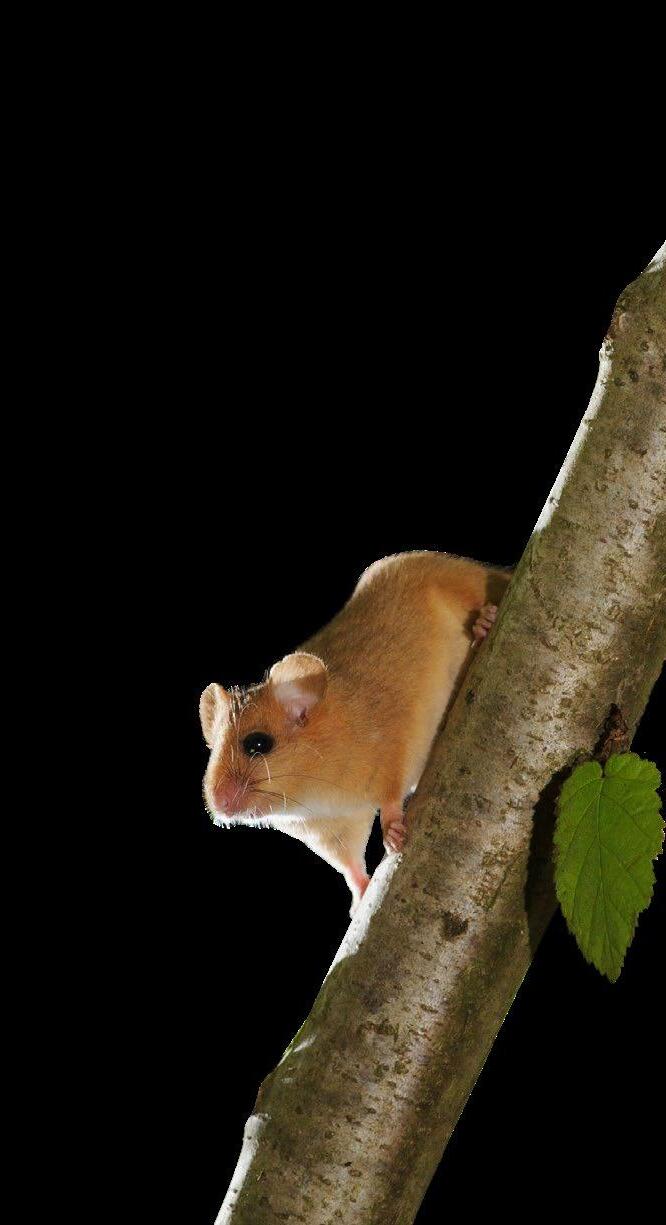
Nightingale: Amy Lewis
Hazel Dormouse: Terry Whittaker/2020VISION
Chalk grassland 2

The nutrient-poor, chalky soil of the North Downs provides ideal conditions for a spectacular array of grassland flora and fauna.
With this habitat hosting as many as 40 plant species in every square metre, which in turn nurture 35 butterfly species alone, it has substantially more biodiversity than most other types of grassland in the UK. Lightly-wooded areas and their margins provide refuge for birds and mammals and boost the biodiversity score further still.
Conservation grazing is an indispensable habitat management tool on chalk and other grassland habitats, replicating the positive effects on the height and diversity of sward formerly provided by low-density agriculture. During the spring and summer months, the Trust deploys Belted Galloway cattle and Boreray and Wiltshire Horn sheep on chalk grassland sites across the North Downs. Key projects delivered in FY24/25 include the establishment of grazing at Pewley Meadows, Quarry Hangers, Larks Rise and Hill Park, and the increasing

use of Nofence technology for our cows to minimise the need for physical fencing infrastructure and human interference on sensitive habitats.
This work sustains specialist species which could otherwise be lost from our landscapes, including Small Blue and Chalkhill Blue butterflies, Shining Pot Beetles and Skylarks. Local expertise and investment are vital both for monitoring and maintaining wildlife. Across our chalk grassland and other reserves, the Trust forges partnerships with specialist recorder and other local voluntary groups wherever possible. For example, in consultation with Butterfly Conservation (BC), butterfly transects have been designed at Pewley Meadows, Horsley Meadows, and Hackhurst, and scrapes have been maintained or introduced at Priest Hill, Howell Hill and Hackhurst.
Bee
Orchid: Jon HawkinsSurrey Hills Photography
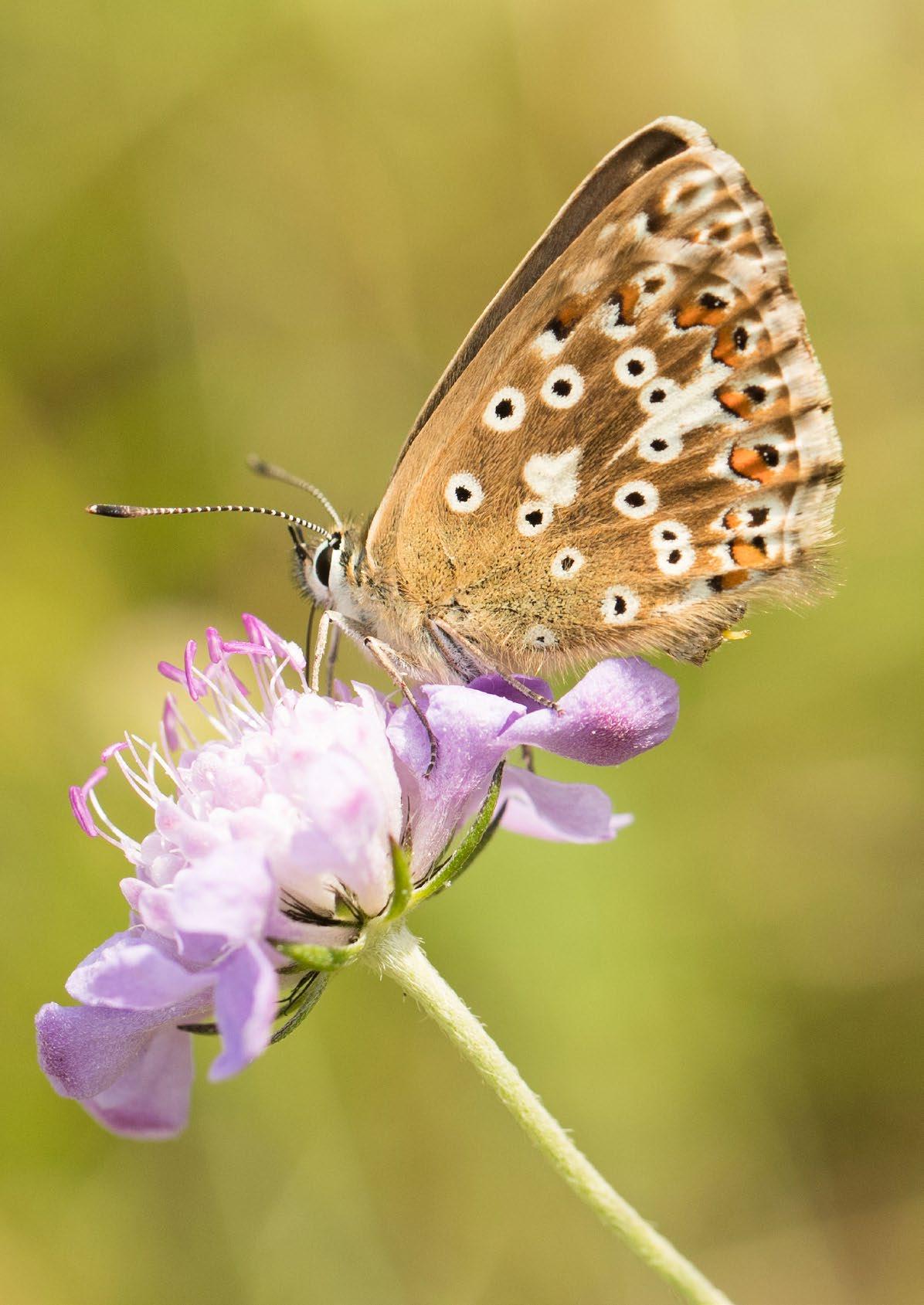
Chalkhill Blue: James Adler
Chalk grassland
Gates for grazers
Some 80 volunteers invested more than 320 hours of work to enable the introduction of conservation grazing using a small flock of Herdwick sheep and goats – a mission undertaken with the Downlands Trust - at Coneyboro Hill and Fames Rough near Banstead in the east of the county. In addition to scrub clearance and tree-popping the team installed more than 85m of fencing, including two field gates, to ensure the safety and security of the herd and the transfer of animals from one part of the site to another. Their work will help us maintain optimum conditions for specialist chalk grassland flora which supports rare butterfly species including the Dingy Skipper, Grizzled Skipper and Green Hairstreak.
Sustainable sustenance for sheep
At Long Plantation in Shabden Park, Chipstead, volunteers invested over 180 hours to carry out maintenance of this chalk grassland site, including the installation of a rainwater harvesting system which will help sustain a small conservation grazing herd of sheep. This structure, kindly purchased with the help of the Chapman Charitable Trust, uses a simple sloping roof connected to a butt, enabling the animals to drink at minimal cost to the Trust or the wider environment.

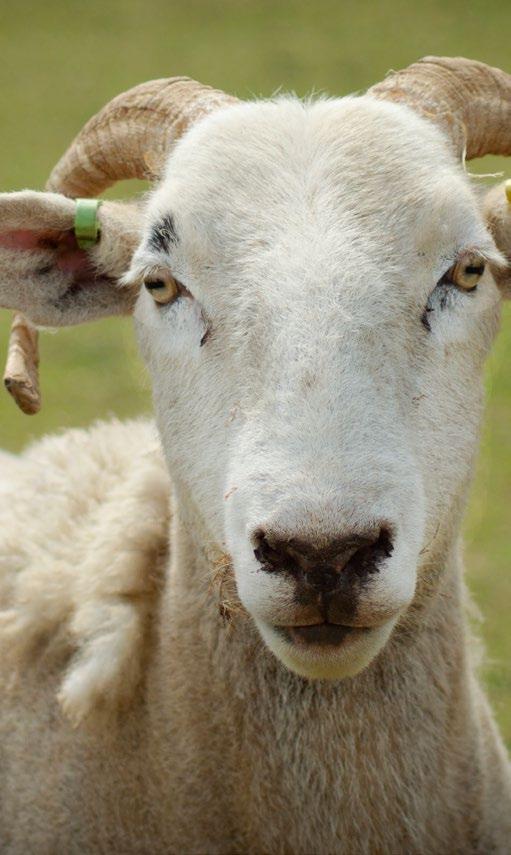


CAMPAIGN UPDATE
In the autumn of 2023, SWT launched an urgent fundraising campaign to support our conservation grazing activities – in particular the introduction of our grazing herds to suitable new sites, the training of more volunteer ‘lookerers’ to supervise the animals and the introduction of more Nofence grazing. Local people and long-standing supporters rallied behind our ‘Grazing Heroes’ appeal, enabling us to invest some £50,000 in this work, and establish new winter quarters for the herd at Elm Farm in Warlingham in 2024/25.
50
reptile refugia installed at Quarry Hangers
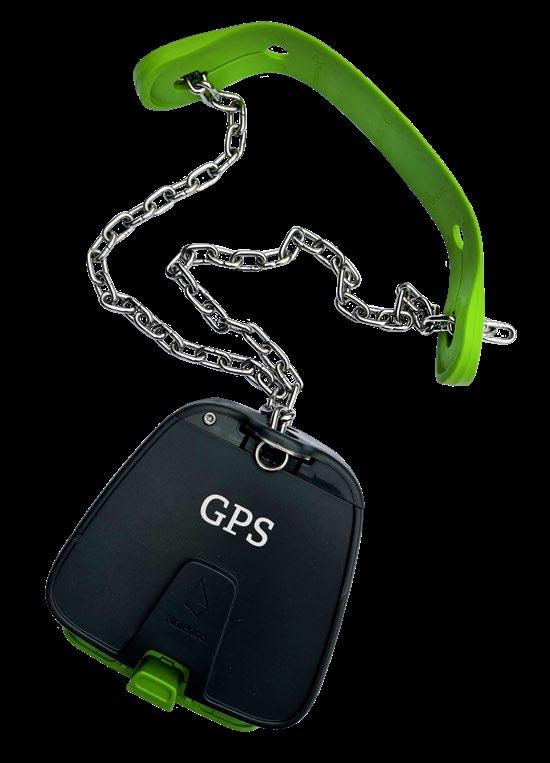
Protecting wild places for future generations
Legacy gifts help to fund vital conservation work in chalk grassland reserves such as Priest Hill. Thanks to the generosity of Life Member Evelyn Kemp, who passed away in 2023, SWT staff, volunteers and researchers are better equipped to secure the future of this rare and sensitive chalk grassland habitat.
Tree-popping, scything grass, clearing footpaths and creating chalk scrapes will benefit a host of species from Skylarks to Small Blue butterflies while providing better access to nature for the local community.

Dingy Skipper: Amy Lewis
Skylark: Fergus Gill/2020VISION
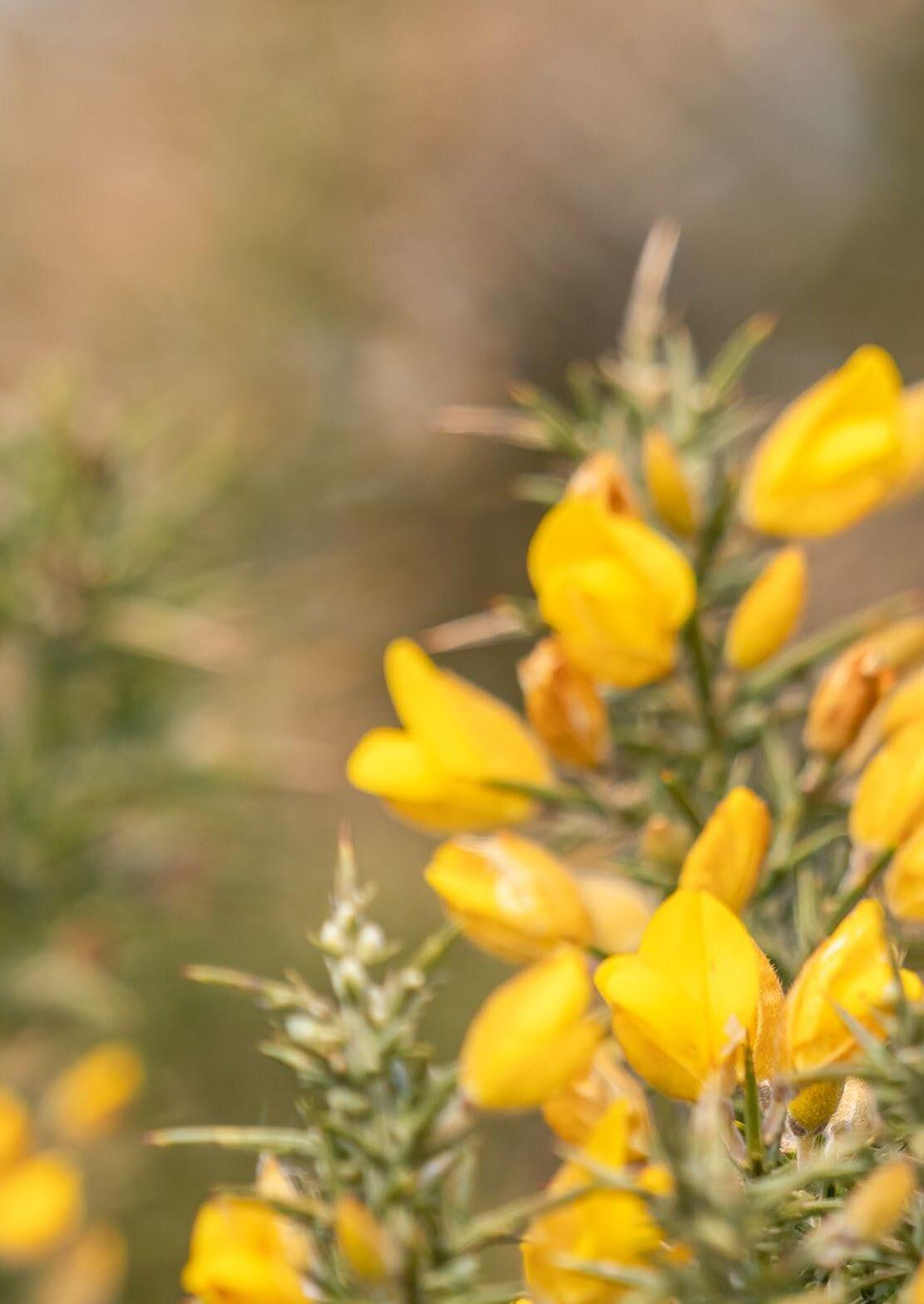
Heathland 3
Surrey is a hotspot for lowland heathland habitats.
In the west of the county a mosaic of heathland reserves - including Chobham, Brentmoor and Whitmoor Commons and Pirbright and Barossa Ranges - provide one of the UK’s most significant concentrations of this internationally-significant terrain. The importance of these sites for wildlife and people is hard to overstate, and many thousands of residents and visitors cherish them for recreation and inspiration. But global warming, fragmentation due to development, and pollution all pose existential threats.
Lowland heathland is a complex environment, containing many rarities and specialists. Nightjars, Woodlarks, Dartford Warblers, Smooth Snakes, Sand Lizards, Heath Tiger Beetles and hundreds of pollinating invertebrates need their mix of scrub, heather, grasses, bare areas, bogs and trees in which to maintain a viable foothold in the UK. No habitat remains static, and it takes many thousands of hours each year to maintain this varied palette and prevent, for example, Silver Birch, Scots Pine and Gorse dominating these sensitive landscapes. This year, volunteers and staff have delivered ambitious scrub clearance, wildfire mitigation, conservation grazing and habitat creation measures. Conservation

grazing using Nofence technologywhich removes the need for additional infrastructure and enables animals to be deployed with greater ease and effectiveness - was used on Whitmoor Common, Chobham Common, Wisley Common, Royal and Elstead Commons, Ashtead Meadows and Thursley Common.
Reducing the fragmentation and degradation of heathland which is not owned or managed by the Trust is a key priority. Delivered by our Nature-based Solutions team on behalf of Natural England, our Heathland Connections project engaged with 52 landowners and managers, carrying out large-scale connectivity and habitat mapping and allocating £35,000 of grants to deliver improvements in heathland habitat. Thanks to our work, and that of our partners, biodiversity is thriving. Surveys carried out across Thames Basin Heaths by a variety of organisations and collated for Natural England showed increases in the numbers of breeding Dartford Warblers (590 pairs - a 33% increase on the baseline survey data of 1997), Woodlark (220 pairs - a 47.7% increase) and Nightjars (422 pairs - a 60% rise).
Smooth Snake: Steve Davis

landowners engaged with through our Heathland Connections project
Heathland Returning tigers to Brentmoor
Brentmoor Heath and Folly Bog near Woking is a haven for reptiles like Grass Snakes, Adders, Common Lizards and Slow-worms as well as large numbers of birds and a vast range of invertebrates. Every week, a 20-strong group of dedicated volunteers gathers with the support of Reserves Officer Sarah White and her colleagues to enjoy nature, socialise and most importantly, to keep the site in optimal condition for nature.
Alongside the more routine tree-popping, hibernacula building, pond maintenance and scrub clearance, the group has spent many hours wielding spades, mattocks and rakes to create ‘scrapes’ of open bare ground which will act as habitat for the nationally-endangered Heath Tiger Beetle, of which a very small population remains on the dry heathland of the reserve.
The Trust is partnering with Species Recovery Trust with a view to introducing more captive-bred specimens in the future. They’ll use the scrapes to hunt, bask and create underground nests, into which their larvae will drag unsuspecting insect prey.
It’s the dedication of these volunteers that makes this place a jewel in SWT’s crown, and a place of national importance for entomology.
Restoring rarities
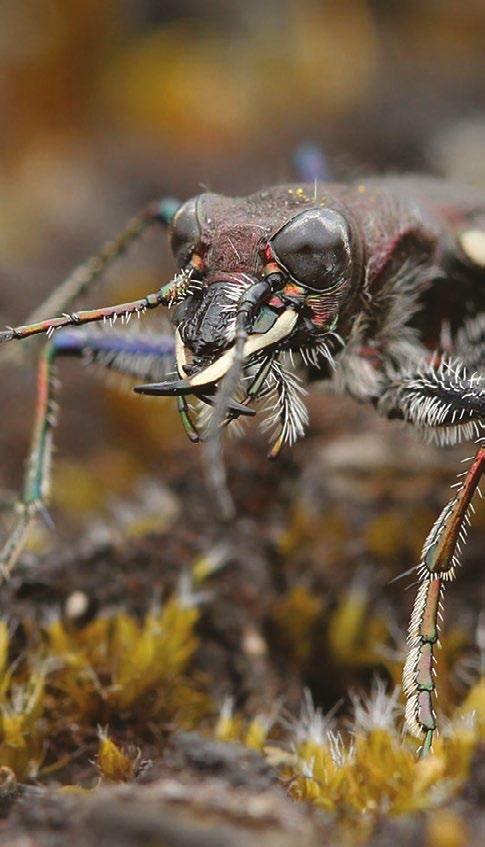
3,000ha
Scrub, while important habitat in its own right, can smother and eventually eliminate more sensitive habitats, including the boggy areas which are vital for some plants and animals. Scrub clearance on Chobham and Whitmoor commons will benefit the nationallyrare Window-winged Caddisfly, which is present on just a handful of sites in the UK. of

Window-winged Caddisfly: Mike Waite


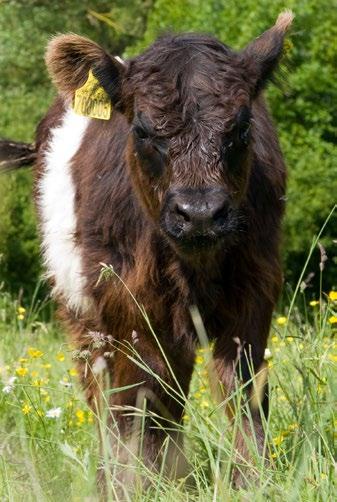
CAMPAIGN UPDATE New quarters for conservation grazers
In November 2024, the Trust took on a long-term tenancy of the 171ha Elm Farm near Warlingham in the east of the county. The farm will be vital layback land for our cattle and a source of home-grown winter forage. It also boasts good woodland, chalk grassland and arable habitats which will be maintained for nature in the years ahead to benefit wildlife and serve as an example of conservation in practice to the local community.
Heathland habitats face big problems, but solutions are at hand. Part of the Trust’s £1m Save Surrey’s Nature appeal, 2024’s One Hundred for Heathlands campaign raised over £100,000 in combined donations and match funding from The Big Give over the Christmas period. This will fund four priorities: to support efforts to identify, improve and link-up fragmented terrain, working with other landowners to restore it to good condition and aiming to create over time an unbroken run of habitat across the west of Surrey; to increase the resilience of heaths against the effects of climate change through the creation of wetter areas, paths and bare ground to act as firebreaks; to enable targeted, species-specific research, monitoring and habitat management; and to enable more extensive day-to-day habitat maintenance and the further extension of ‘Nofence’ conservation grazing.
The overwhelmingly positive response to this appeal reflects the huge sense of connection people feel with these special places, and we thank everyone who contributed.

Heath Tiger Beetle:
Jon HawkinsSurrey Hills Photography
Adder: Jamie Hall
Belted Galloway
Wetlands 4
A magnet for wildlife and a cornerstone of every ecosystem, our wetlands are among the richest - but most troubled - of habitats.
Increasing levels of pollution and abstraction and the destruction of many smaller water bodies over decades has put many once-common species in trouble and pushed rarer ones to the brink – but SWT has laid strong foundations for sustained improvement and has major plans to deliver species recovery on a large scale. Two main rivers run through Surrey, and both are highly biodiverse Thames tributaries: the Wey, which drains much of south-west Surrey and flows through Godalming and Guildford, and the Mole which runs for some 80km from just across the Sussex border near Gatwick before passing through the North Downs and entering the Thames at East Molesey.
In partnership with South East Rivers Trust (SERT), SWT hosts two major forums that bring together more than 50 organisations from the private and public sectors to plan and deliver restoration work, encourage more sustainable water and land management, and limit pollution: the Wey Landscape Partnership (WLP) and the River Mole Catchment Partnership (RMCP).

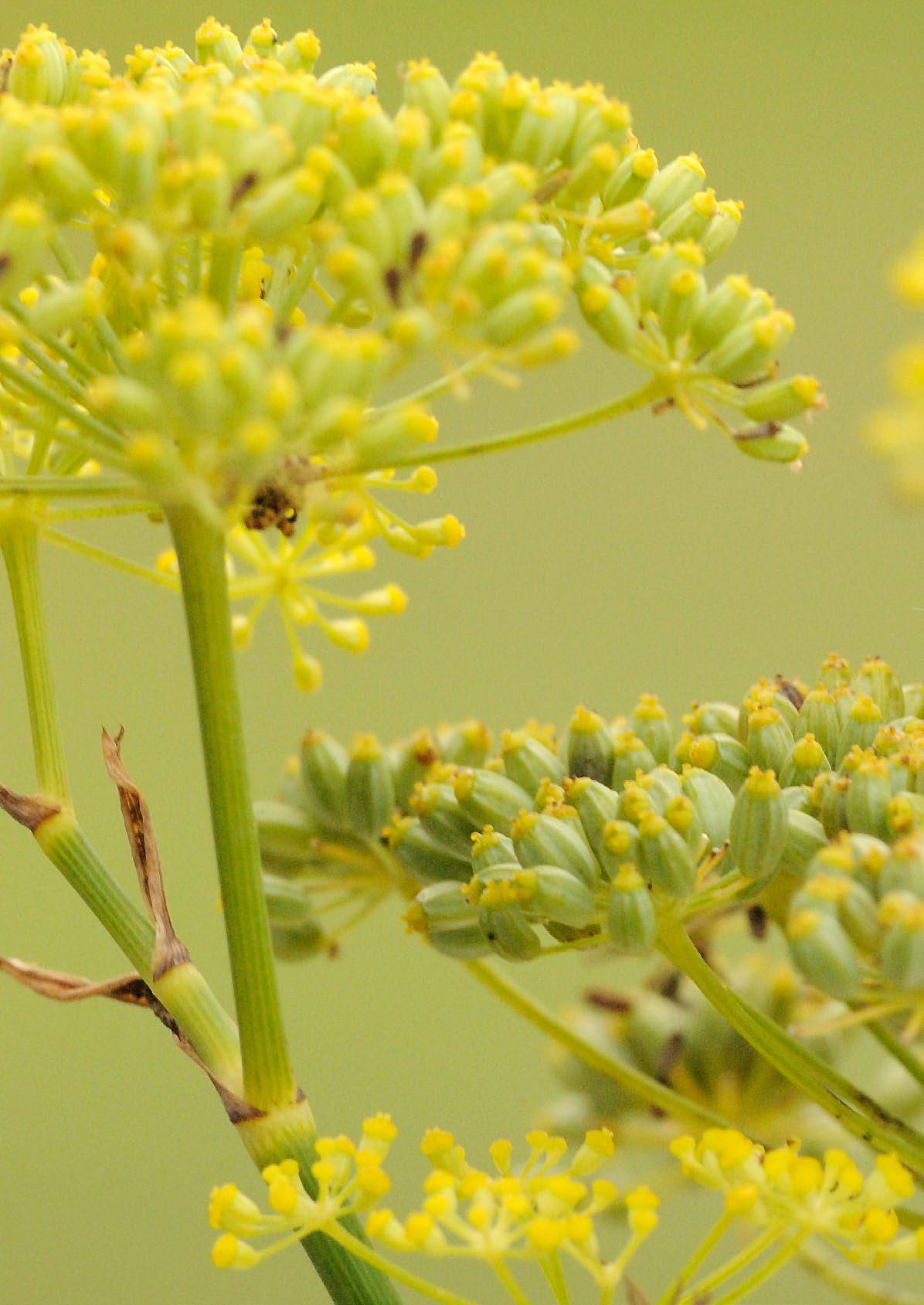
Covering the river Eden, which flows into the Medway in the east of the county, we also work with the Medway Partnership. Working through these bodies, and independently with local landowners and community groups, SWT staff and volunteers have monitored populations of riverfly to assess and report on water quality, carried out riverbank and underwater landscaping, installed nest boxes and planted reedbeds, advised farmers on how to reduce runoff and maintain habitat-rich banksides, created and managed ponds and boggy areas, and carried out vital community education work to help limit the spread of invasive species.
These actions will benefit all local wildlife and boost populations of under-pressure species including Harvest Mice, White-clawed Crayfish, Brilliant Emerald Dragonflies, Brown Trout, Grayling, European Eel, Reed Warblers, Water Rails, Bitterns, Kingfishers, Common Frogs and Grass Snakes. Potential future beneficiaries could include Otters and Water Voles.
Common Frog: Jamel Guenioui
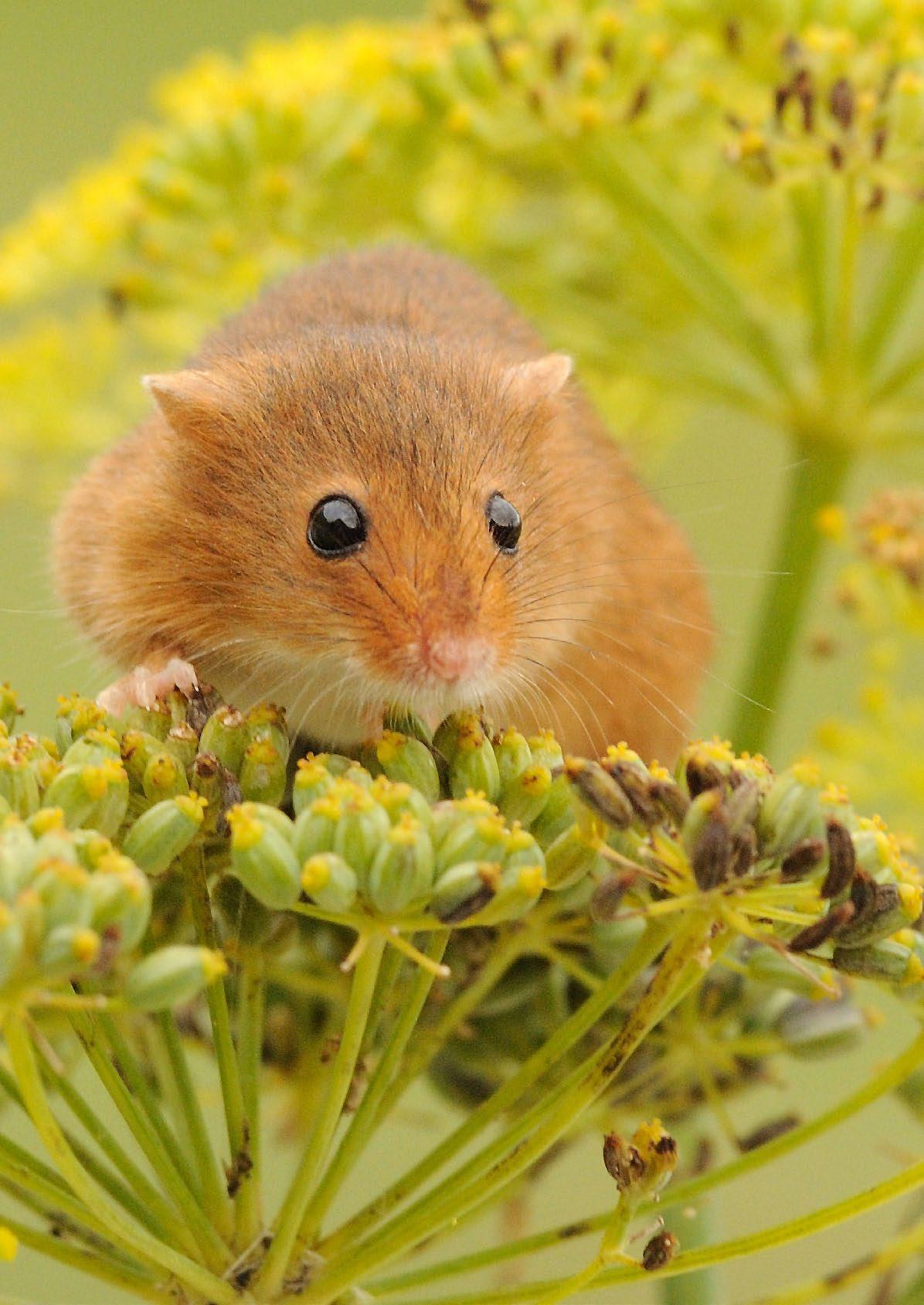
Harvest Mouse: Amy Lewis
Wetland Weir removal on the Tillingbourne
SWT’s Nature-based Solutions team achieved an important milestone at East Shalford on the Tillingbourne River this March. Concluding a project originally spearheaded by SWT Wetlands Project Manager the late Glen Skelton in partnership with the Environment Agency (EA), Ecosulis and Fishtek, the group successfully removed a concrete weir which was acting as a barrier to the passage of a range of fish species on the river.
A more natural and varied flow of water through the channel has expanded passage for fish including European Eel and Brown Trout, and additional gravel and rock should facilitate successful spawning and migration upriver. The team also reprofiled and renaturalised the river with a ‘pool and riffle’ sequence to further improve overall biodiversity.
3 river catchments managed in partnership

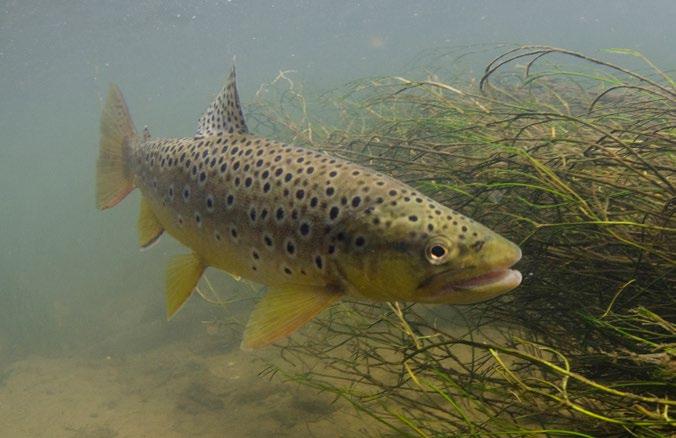

Brown Trout: Jack Perks


Ecosystem Engineers
Beavers are known as ‘ecosystem engineers’ because they reshape landscapes by building dams, thus creating ponds and re-wetting habitats.
Their presence leads to:
Carbon storage - Wetlands trap carbon, helping to combat climate change.
Flood prevention - Natural water management reduces flood risks.
Wildfire control - Water-rich areas limit the spread of wildfires.
Thriving biodiversity - Wetlands support countless species, from birds and amphibians to rare plants.
Across the UK and Europe, Beavers have already proven their ability to restore ecosystems. Now, we have the chance to bring them back to Surrey.
CAMPAIGN UPDATE


The Trust has now announced plans to re-wet parts of its reserves, potentially including lowland heathland areas. We are currently assessing the feasibility of reintroducing the UK’s top native engineer, the Eurasian Beaver, to selected sites to help deliver this in the future. Find out more about this work and how you can support it at surreywildlifetrust.org
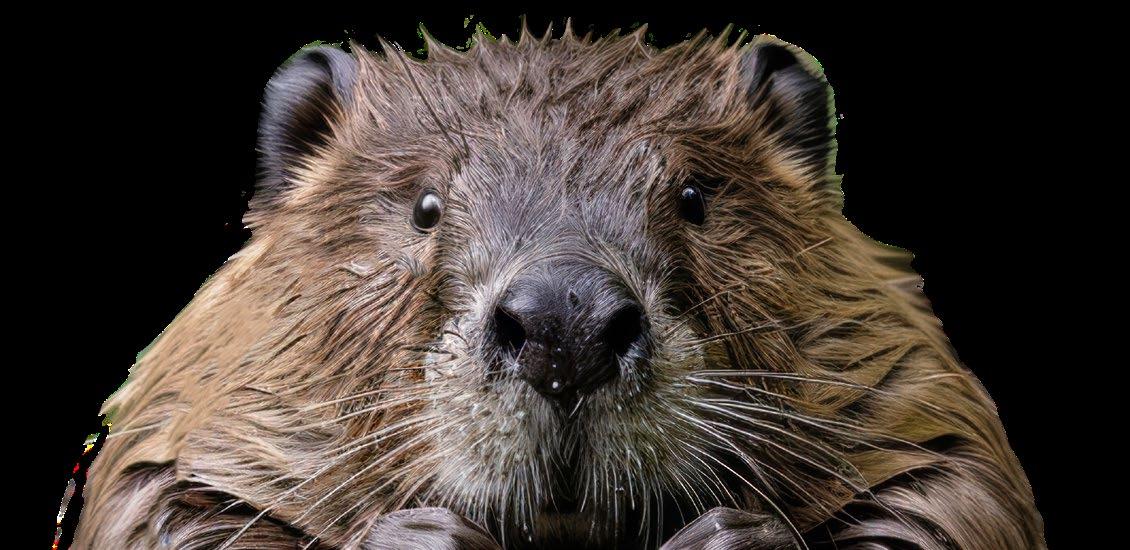
Blue Azure
Damselfly: Macro.Paul
Raft
Spider: Ross
Hoddinott/2020VISION
Eurasian Beaver

Research & Monitoring

Protecting wildlife effectively requires a comprehensive understanding of the natural world and the local conditions that shape it.
Capitalising on new technologies and using data collected and interpreted by volunteers, academics, conservation professionals and scientists is increasingly central to SWT’s work.
Rusty Hook-moss: Mike Waite
Shining Pot Beetle: Mike Waite

Academic research and partnerships
Partnerships with academic institutions including Royal Holloway University of London and the University of Surrey have led to the publication of papers covering the distribution of Shining Pot Beetles (pictured), landowner perceptions of rewilding, the impact of domestic dogs on wildlife, and an investigation into the value of palaeoecology as a conservation tool produced by Research & Monitoring Manager Ben Siggery. Other research themes covered by students facilitated by our Research & Monitoring team included sustainable agriculture and small-scale forests. We also supported Actions for Nature, a project identifying the feasibility and effectiveness of specific interventions that citizens and organisations can take to boost biodiversity.
In May 2024 the Trust hosted its first Research & Monitoring Showcase at Royal Holloway, University of London. At this well-attended event, our student researchers and collaborators shared their findings and insights on how we build and utilise evidence to find longterm solutions to ongoing biodiversity declines. More information at surreywildlifetrust.org/research
Citizen science
Monitoring individual species and habitats effectively requires time, energy and good direction. Our Citizen Science Officer, Dan Banks, worked with more than 100 local people to assess populations of three species in particular: Harvest Mice in reedbed habitats; Nightingales in scrub, heathland and woodland; and Grayling butterflies, primarily on heathland. In each case, a clearer picture of distribution and density levels has been gained, and specific actions can now be taken to ensure that habitat is managed, improved or conserved across multiple locations to assist with species abundance and habitat quality and connectivity.
Discovery
In summer 2024, Director of Research & Monitoring Mike Waite re-found a population of Rusty Hook-moss Scorpidium revolvens (pictured) - a postglacial ‘relict’ species that’s very rare outside of the British north-west - on Pirbright Ranges. There hadn’t been any confirmed records of this highly habitatspecific species, which forms thick mats in ‘flushed’ open mires over peaty soil where the water table remains high yearround, from the Ranges since 1981.
Space4Nature
This three-year project - made possible by players of People’s Postcode Lottery and delivered in partnership with University of Surrey, Buglife and Painshill Park Trust - engaged more than 200 volunteers in surveying wetland, chalk grassland and heathland habitats to assist in the development of a new method for identifying, categorising and ultimately connecting habitats for wildlife on a county-wide basis. The data they collected from sites including Painshill Park, Sheepleas, Dawcombe and Unstead nature reserves is being used by colleagues at the University of Surrey to train a machine learning tool which will ultimately map priority areas for connection and conservation using images taken from space. This should facilitate better-targeted and larger-scale conservation regionally, nationally and internationally.
11 research institutions worked with
Learning from the past to shape the future
As part of the Space4Nature project, GIS, Research & Monitoring Manager Ben Siggery is using palaeoecology (the science of using fossilised animals and plants to understand past environments) to unravel the ecological history of Chobham Common. By building bridges between palaeoecology and conservation, Ben hopes SWT can establish best practice – and put it into action.
Along with researchers from University College London, Ben collected and analysed sediment cores from long-established ponds in the south of the Common and analysed the samples against several indicators of environmental change, including charcoal remains and microscopic algae.
This research tells us is that Chobham has lost some of its biodiversity over time, is now more at risk from fire, and has poor climate resilience, so Ben is working with SWT’s Reserves Management team on applying his findings to support their conservation efforts. Ben’s findings also suggest that we should continue to remove scrub to be in keeping with historical levels, but that this isn’t enough for full recovery of the wetland biodiversity or to help mitigate the increasing fire risk. Rewetting parts of the Common is likely to be highly beneficial as a means of boosting the biodiversity and resilience of this site.
Evaluating Actions for Nature

Conservation cannot be left to the professionals; everyone must play their part in nature’s restoration.
From April 2024, Sarah Papworth, a Reader at Royal Holloway, University of London, came to the Trust to work with experts across the conservation community to help identify which individual actions can have the biggest overall impact for nature, and also to help pinpoint actions which perhaps have a smaller impact, but are easier for anyone to do.
Presenting her initial findings to more than 1,200 ecologists from around the world at the British Ecological Society’s Annual Meeting in Liverpool in December, Sarah revealed that of a total 63 actions that can be taken by members of the public, the top three in terms of ecological impact are herbicide and pesticide free gardening, choosing biodiversity-friendly investments and reducing fossil fuel use.
The highest-rated behaviours for ease included recycling, feeding and providing water for wildlife, and collecting litter. Search ‘Actions for Nature’ at surreywildlifetrust.org for the full list.
Future publications from our Research & Monitoring team will include an inventory of Surrey’s old former grazing grasslands, which will aim to inform more effective local planning policy to protect these ancient and invaluable habitats.


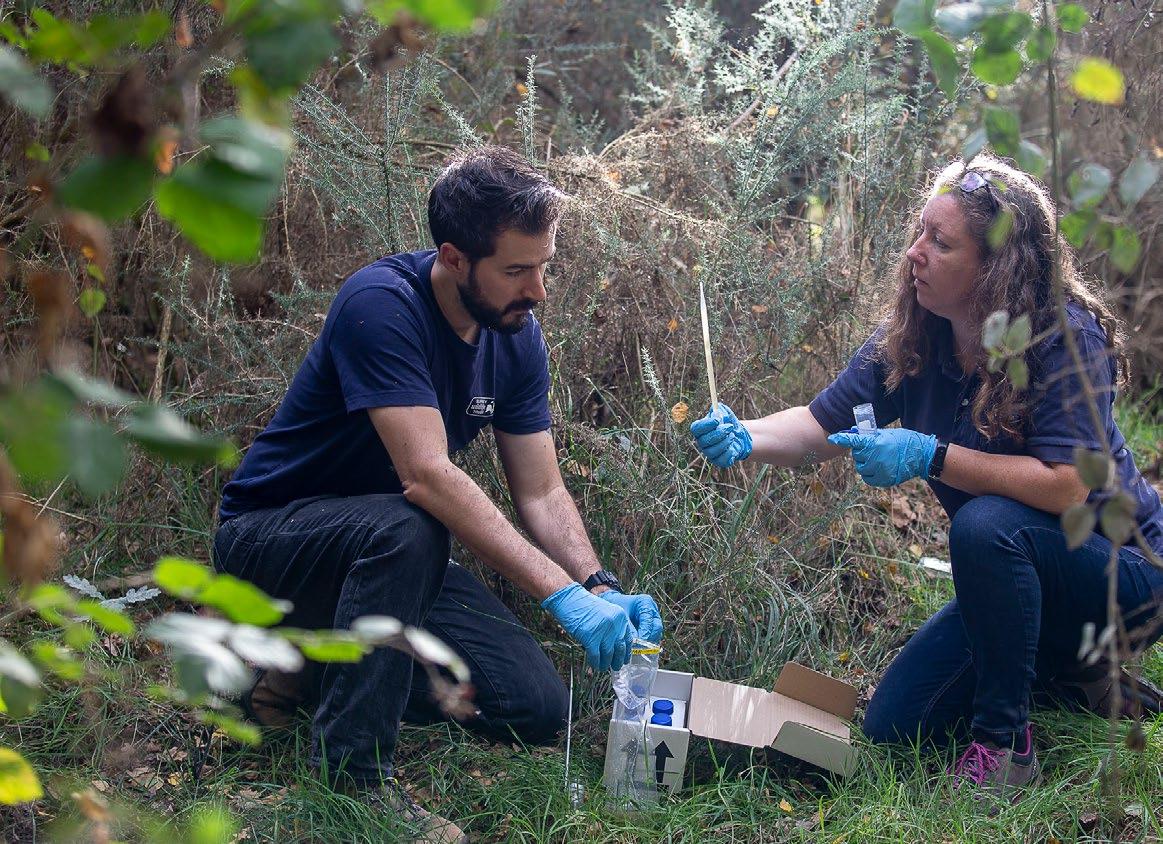

Communities 6

Our community work has three key aims: to work with local people to protect nature where they live; to help more people start their own conservation projects; and to raise awareness of environmental issues.
To these ends, we have provided a range of expert support and advice both digitally and in-person to 190 local organisations from church groups to care homes – all of which will build momentum as we work towards the 30by30 goal.
Much of this work during 2022-2024 was carried out through Nextdoor Nature, a nationwide project made possible thanks to £5 million funding from The National Lottery Heritage Fund. Community talks, equipment, extensive support and events run by SWT were provided for a further 15 local groups in the Guildford and Woking areas, from the Shifa Network to The Hive Community Centre.
The legacy of this work lives on in a range of diverse communities through everyday actions, such as no-mow areas and wildlfower planting.
To mark the conclusion of the project, in June 2024 the Trust delivered a celebratory and educational event for more than 100 people. This included training and workshops on essential skills such as fundraising and how to record wildlife in urban and suburban areas, as well as a vital networking opportunity to help people forge wider connections and share best practice over the long term.
To empower people to take action for nature, the Trust also provided 52 free spaces over 25 Adult Learning courses on subjects including species ID, surveying techniques, tool sharpening and woodland management.
In 2024 we made available, free of charge, a series of Wildlife Recording Kits - boxes filled with surveying equipment to help local people undertake species monitoring surveys in their community spaces.
Moving forward, the Wilder Communities team will increase its focus on supporting communities to take action for nature. Training and activities tailored to local priorities, species and habitats, as well as “Share and Learn” sessions aimed at connecting communities and sharing ideas will all contribute towards our ultimate aim of connecting Surrey’s nature.

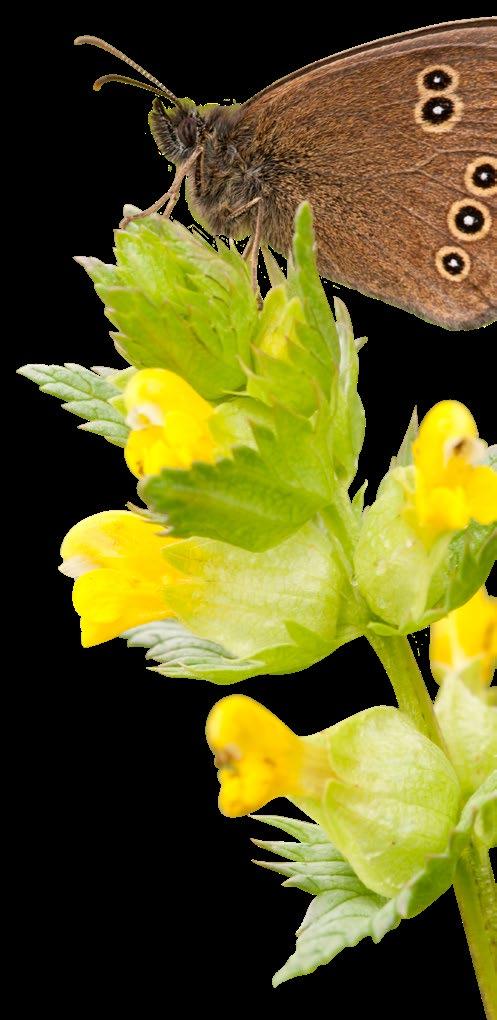
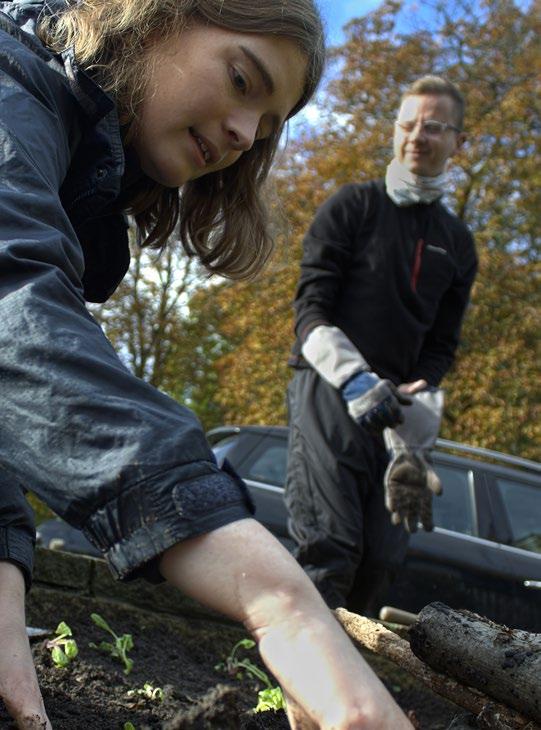


190 local organisations supported by the Trust
Grants for local action
Another facet of the Nextdoor Nature project’s legacy was the Nextdoor Nature Grants, which were allocated to 12 local groups. Projects enabled by this funding include: meadow management and sowing Yellow-rattle to improve species diversity at Harry’s Meadow; helping Worplesdon Parish Council connect habitats within the Jacobs Well area; carrying out a biodiversity baseline audit in Roman Farm, Park Barn; the transformation of a shipping container into a wildlife garden and educational play area for children in Knowle Park, Cranleigh; orchard management training for Shalford Climate Action Group; the planting of sensory native flora in Laleham with the charity Surrey Choices; and hedgerow management and preservation in Wonersh.
Engaging a new generation
Our Youth Action Committee of young volunteers works with us to ensure that the perspectives of people aged 16-30 are represented within the Trust and inform how we approach our work. The Committee also undertakes practical conservation projects, including the creation of planters filled with native flora including Primroses, Bluebells, Red Campion, Lesser Celandine, Forget-me-nots and ferns to help educate and inspire local people in Leatherhead and Ashtead.
Nature & development
Our Ecology Planning Advice Service (EPAS) supports Local Planning Authorities in Surrey, ensuring that potential impacts on nature are assessed and considered. The mandating of Biodiversity Net Gain in February 2024 has led to an increased focus on providing ecological advice in this context, including challenging the information provided by developers’ ecologists where this does not meet required standards. Overall, more than 1,000 development applications have been influenced to nature’s benefit.
Ringlet on Yellow-rattle: Ross Hoddinott/2020VISION
Education 7
7,500
families reached via Wilder Schools
Too many people are disconnected from nature, and this disconnection often starts very early in life.
As well as delivering practical answers to the decline in biodiversity, Surrey Wildlife Trust is on a mission to inspire an interest in wildlife in minds of all ages. We want to re-forge the bonds between people and organisations and the natural world that sustains them all.
Our Wilder Schools programme forms threeyear partnerships with local schools to teach young people about wildlife and conservation in a fun and positive way. We work with the students to physically improve the biodiversity of their school grounds which in the process develops their connection to nature, clearly seen in the way they care for their newly created habitats. They witness first-hand the host of species, from amphibians to pollinating insects, that benefit from the creation of ponds, hibernacula, no-mow areas, meadows, feeding stations and hedgerows. Encouraged through newsletters and competitions, many of these actions are then replicated at home, in gardens, community spaces and window boxes.
We also work alongside the teaching staff, supporting them to take more day-to-day learning outside to promote the physical and mental wellbeing that comes from learning in nature while making learning varied, applied and fun.
We partnered with 25 schools during the period covered by this report, reaching thousands of children and their families. Furthermore, our Education team welcomed a total of 4,300 young people to our educational centre at
Nower Wood near Leatherhead. As a mature woodland brimming with life, this is the perfect location to learn about nature in a hands-on way, and to experience the joy of a biodiverse environment. Additionally, our ongoing collaboration with the University of Surrey’s Institute for Sustainability has resulted in the creation of BeNature! a guide for practitioners rooted in cutting-edge sustainability research and real-world expertise. Designed for teachers, parents, and nature advocates, BeNature! offers accessible, practical steps to cultivate a stronger relationship with the natural world, inspiring more people to embrace, protect, and celebrate the environment around them.
Funding from the Space4Nature project has also enabled us to teach children at 10 schools about the particular importance of habitat connectivity – and the practical fruits of this include the creation of hedging and no-mow areas to link up suitable spaces for wildlife in and around school grounds.
For adults, we facilitate learning through our volunteering programmes (see page 28) and through formal courses hosted at Nower Wood. In this reporting period, more than 500 local people have learnt a huge range of skills from willow weaving and scything, to identifying and recording bird life, invertebrates, fungi and flora. We hope that participants have made lasting friendships and will remain part of a likeminded community of people who care about nature.


1 2 3 5 4


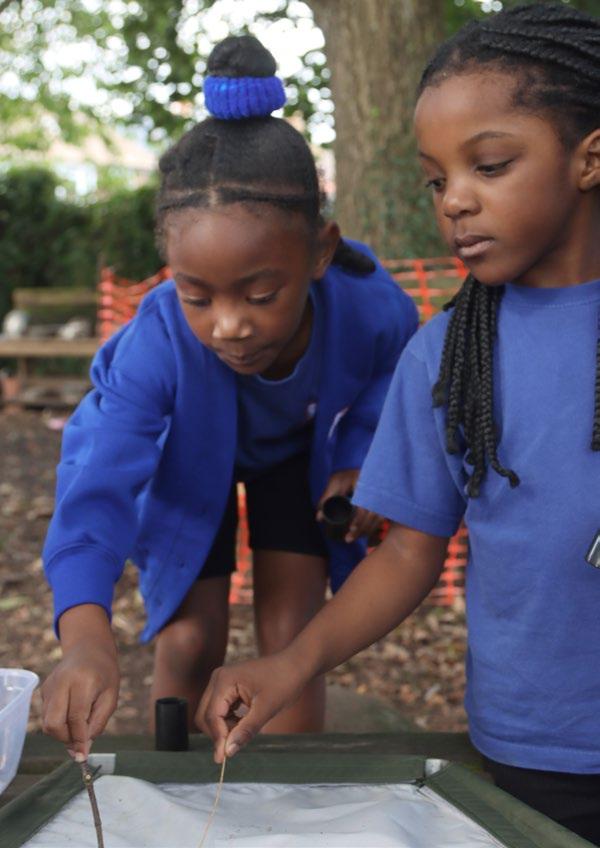
1. Children making a meadow for wildlife at Hurst Green Infant School
2. School grounds survey underway at Shawley Community Primary School
3. A new wildlife pond at Duke of Kent School
4. A meadow created by students at Queen Eleanor’s Church of England School, Guildford
5. School grounds surveys at Horley Infant School

by volunteers
Volunteering 8 27,439 hours given
Managing
over 5,000ha, the
Trust could not carry out our work without the contribution of the hundreds of people who volunteer with us.
Some give a few hours as and when they can, others make a regular weekly contribution over many months or years, while still others become Voluntary Wardens or Voluntary Site Managers playing a lead role in the conservation management of specific reserves – demonstrating a level of expertise to match the most experienced conservation professionals.
No matter how much time our volunteers are able to give, each one deserves our sincerest thanks and respect.
In this reporting period, hundreds of people helped out over more than 6,000 volunteering sessions, effectively delivering well over 27,000 hours of practical help, ranging from checking on our grazing livestock and restoring Surrey’s key habitats, to helping gather data for citizen science projects like Space4Nature, to connecting children with nature at our Nower Wood Education Centre or supporting behind-the-scenes operations in our offices. Key achievements for nature delivered include, but are not limited to, the creation of firebreaks on Chobham Common, helping safeguard Nightjars and other ground nesting birds from the risk of wildfires; the installation of berms and meanders on the Pipp Brook and Tillingbourne, creating better conditions for European Eels, Kingfishers and Brown Trout; coppicing at Cucknell’s Wood to assist in the recovery of Hazel Dormice and Nightingale populations; and supervising our conservation grazing herds to benefit hundreds of chalk grassland and heathland species from Sand Lizards to Round-leaved Sundew.

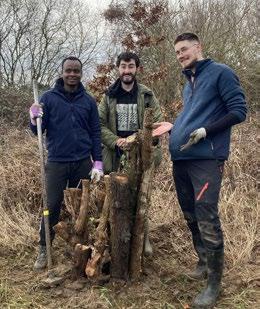
My Green Future
In early 2025, the Trust delivered three practical conservation volunteer days as part of the My Green Future programme, a 12-week volunteering programme led by Air Time in collaboration with Surrey Hills Society, Surrey County Council and the National Trust. My Green Future aims to help 18 to 24-year-olds gain valuable experience in the environmental sector, a vital objective if we are to meet tomorrow’s environmental challenges. Focusing on the theme of farming in protected landscapes, 12 volunteers helped with scrub clearance and livestock checking at Quarry Hangers, and constructed hibernacula and stumperies at Horsley Meadows. With our partners at Tuesley Farm, our Nature-based Solutions team led the volunteers in conducting hedgerow surveys.

Hedgelaying at Pierrepont Farm
Skilled volunteers play a vital role in training and inspiring others, thus helping scale-up and accelerate the Trust’s impact. At an event delivered with Countryside Regeneration Trust (CRT) and RSPB Farnham Heath in March 2025, 30 volunteers who had formerly participated in our Hedgerow Heritage project joined SWT staff to help share their skills and knowledge with other conservation volunteers in Surrey. This work also contributed to SWT's Heathland Connections project, which will deliver habitat restoration by supporting landowners to effectively manage heathland and other habitats in the west of the Surrey Hills.

Jane Saunders
Jane Saunders volunteers in our Pirbright office, where she helps the Membership team with a variety of tasks which include making-up membership packs and calling new members to thank them for joining. Jane says that volunteering for the Trust is a great way to feel part of something meaningful and to spend time with like-minded people who care about the natural world. People like her enrich the working lives of our staff and enable us to deliver our mission costeffectively. Thanks, Jane – and to all our volunteers!
Thank you to our business supporters
We believe that economic growth can be achieved sustainably, if businesses work to minimise negative and maximise positive impacts on biodiversity.
It has been our pleasure to collaborate with the following organisations:
Gold Members
Chessington Garden Centre
Chessington World of Adventures Resort
DERTOUR UK
KIA UK Ltd
Premier Miton Investors
Surrey County Cricket Club
Toyota (GB) PLC
Wentworth Golf Club
West Hill Golf Club
Woking Football Club
Woking Golf Club
Silver Members
Eiger Trading Advisors Ltd
Chimney Fire Coffee
SES Water
Tozer Seeds
UK Power Networks (UKPN)
Weybridge Vehicle Consultants
Bronze Members
Wild By Design Landscapes
Small Business Supporters
Back on Track
Clandon Wood
Landscaping Solutions Ltd
Luke Western Art
Hit the Trail
Pippin and Gile
Business Supporters & Donors
Albury Vineyard
Benevity
BUPA
Car Take Back
Co-op
Cotswold Outdoor Clothing
GiveaCar
Novuna
Network Rail
Ringway
Surrey Choices
Surrey County Council
Surrey Green Burials
Surrey Hills Photography
University of Surrey
Vine House Farm
Wild! About Coffee
“We understand that biodiversity protection and restoration is a key element in combatting the climate crisis.”
Steve Elworthy, Surrey County Cricket Club
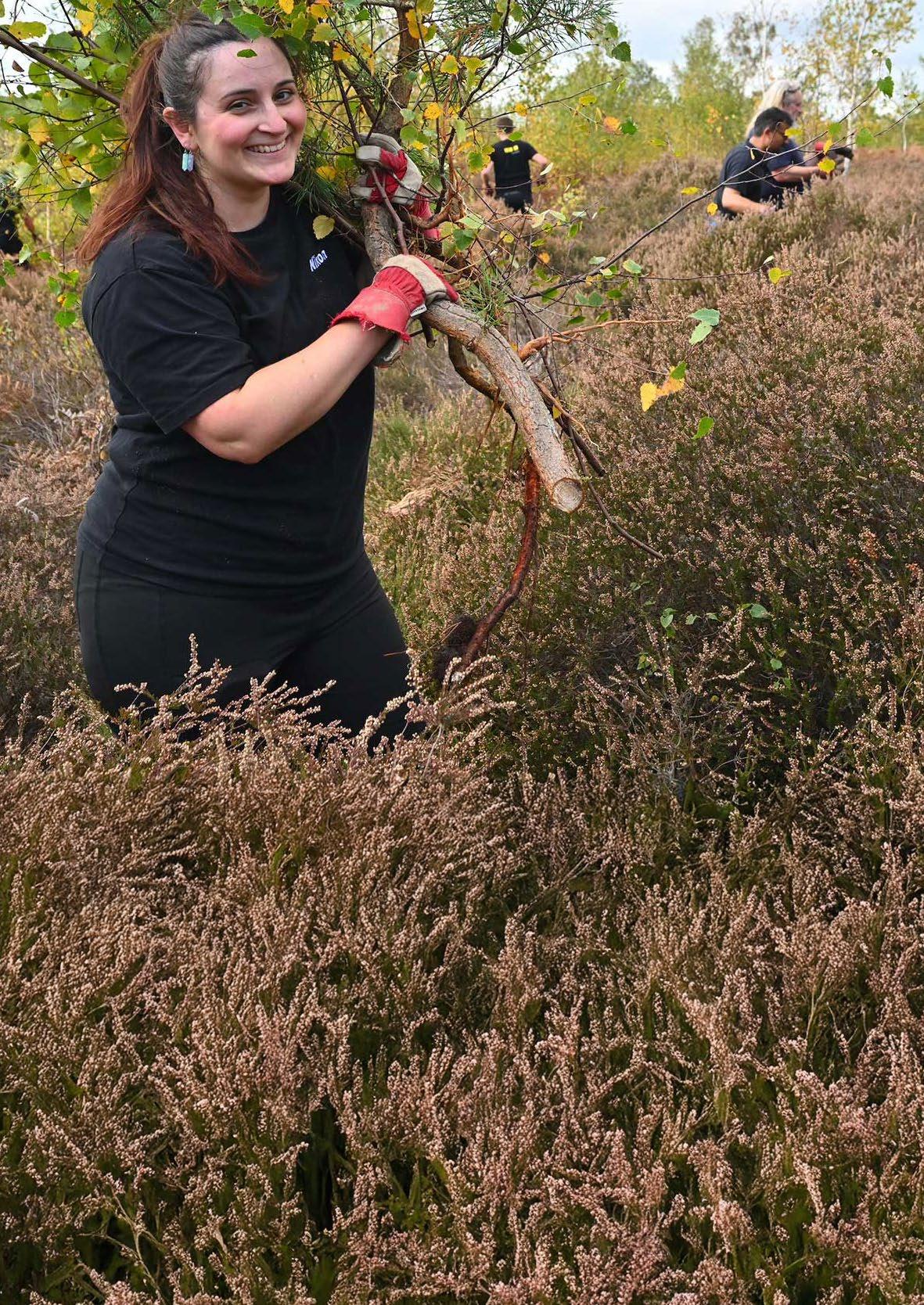
27,512
Surrey Wildlife Trust members
28 local businesses worked with us as formal corporate members
Good for wildlife, good for business
SWT partners with businesses across the county to support their sustainability goals, raise funds for nature, and manage and create habitats, including through staff volunteering opportunities called Wild Work Days.
In March 2025, teams from Kia and AXA visited the Bigwood Estate, a mixed farm covering 250 acres of arable land, permanent pasture, woodland and wetlands. Over two day-long sessions, and working alongside SWT’s Corporate Partnerships team, the volunteers planted some 150 meters of mixed native hedgerow. This will enhance biodiversity, landscape resilience and connectivity, strengthen our relationships with these influential businesses and reinforce the mental and physical wellbeing of their employees.

